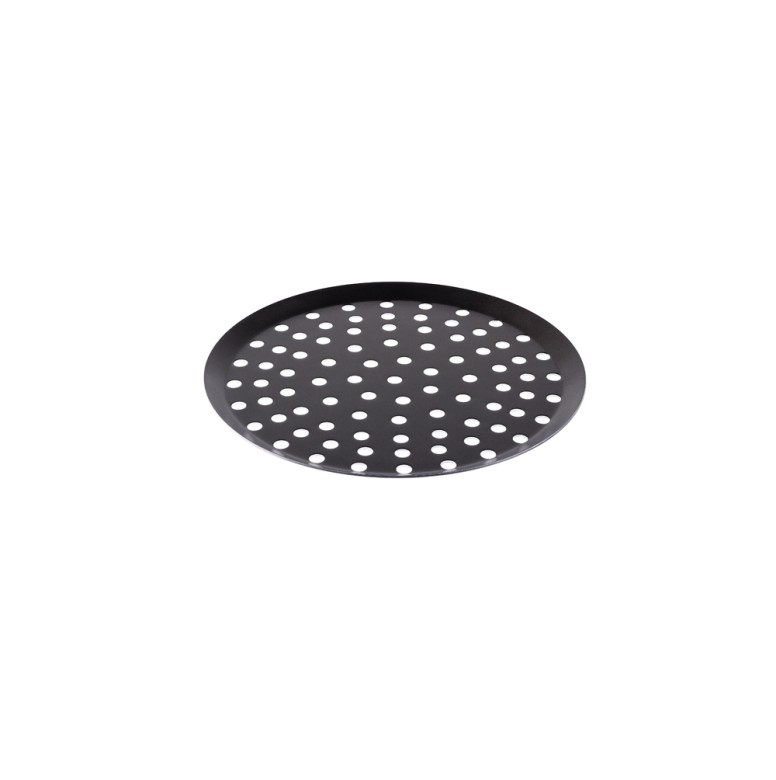Nothing beats a baked pizza fresh out of the oven. With the right equipment, your homemade pizzas can look and taste like it came out from an Italian bistro! Amazingly, investing in a few essential pizza tools will exponentially enhance the results of your pizza.
Here are 4 commonly asked questions to help you become a professional pizza baker.

1. Pizza Stone VS Pizza Pan?
To avoid having a soggy crust, it is highly recommended to use a pizza stone. The pizza stone absorbs the moisture from the dough and distributes the heat evenly throughout the pizza, resulting in a crispy crust. However, you would need to preheat the pizza stone for an hour before putting the pizza on it.
Pizza Stone with Base by Ibili (Retail Price: $44.90)

A pizza pan, on the other hand, is commonly seen with a perforated base, which allows heat to be in direct contact with the pizza, resulting in a crispy golden brown crust. This pan does not need preheating which makes it more convenient.
Aluminium Non-Stick Round Perforated Pizza Tray by de Buyer (Retail Price: $28.90)
2. Stand mixer or kneading by hand?
Kneading by hand is the traditional approach where you repeatedly fold and press to create gluten with an equal distribution throughout the dough. Those who want to have a better feel for the texture of the dough would appreciate this method. While current technology is able to replace manual kneading, it is impossible to completely mimic the manual kneading action. However, this approach is more time-consuming and tiring on the hands and wrist.
A stand mixer is a good alternative to manual kneading as it is slower than a food processor which means that we can still observe the development of the dough and it will not break down the gluten strands. Convenience is one its main strengths: You can preheat the oven, prepare other ingredients while letting the mixer knead the dough. The only downside for this machine is that the gluten strands created by the mixer follows the spiral pattern of the dough hook instead of random patterns which can only be created by manual kneading.
3. What type of peel will match your kitchen?
A pizza peel is a large flat paddle with a long handle used for transferring the uncooked and cooked pizza in and out of the oven. This will only be essential if you prefer baking your pizza on a pizza stone.
Shape
Generally, there are two kinds of shape for pizza peels, square and round. The square shaped peels would be better for home kitchens as they match the shape of our conventional ovens. Round ones are more suited for restaurants using large ovens with small openings.
Material
Wood has the advantage of preventing the dough from sticking onto the peel which minimises damage to the precooked pizza. However, wooden pizza peels tend to be thicker which makes it harder to slip it under the pizza when taking it out of the oven. Maintaining it can be a hassle as you have to ensure the peel is dry before storing to prevent warping. Mineral oil has to be regularly used as polish for the peel to prevent it from absorbing odours and stains.
Metal peels are easy to clean and long lasting. The thin blade also allows easier handling of the pizza. However, metal peels tend to have the dough stick onto its surface, but this can be overcome by dusting it with flour beforehand.
Another important thing to note is the length of the handle. Ensure that the handle is long enough to reach to the end of your oven.
4. What other equipments can enhance the pizza making experience?
Rolling pin
A rolling pin is a must if you do not intend to stretch or toss the pizza dough. Choose a rolling pin that fits nicely in your hands and is easy to maneuver to ensure perfect flat dough.
Rolling/French Pin by Epicurean (Retail Price: $78.38)

Pizza Cutter
It is easier to slice up a pizza using a pizza cutter. We recommend getting a cutter with a large wheel (approx. 4 to 6 inches) so that you can cut the deepest areas with ease. A large handle is a plus point towards easier application.




